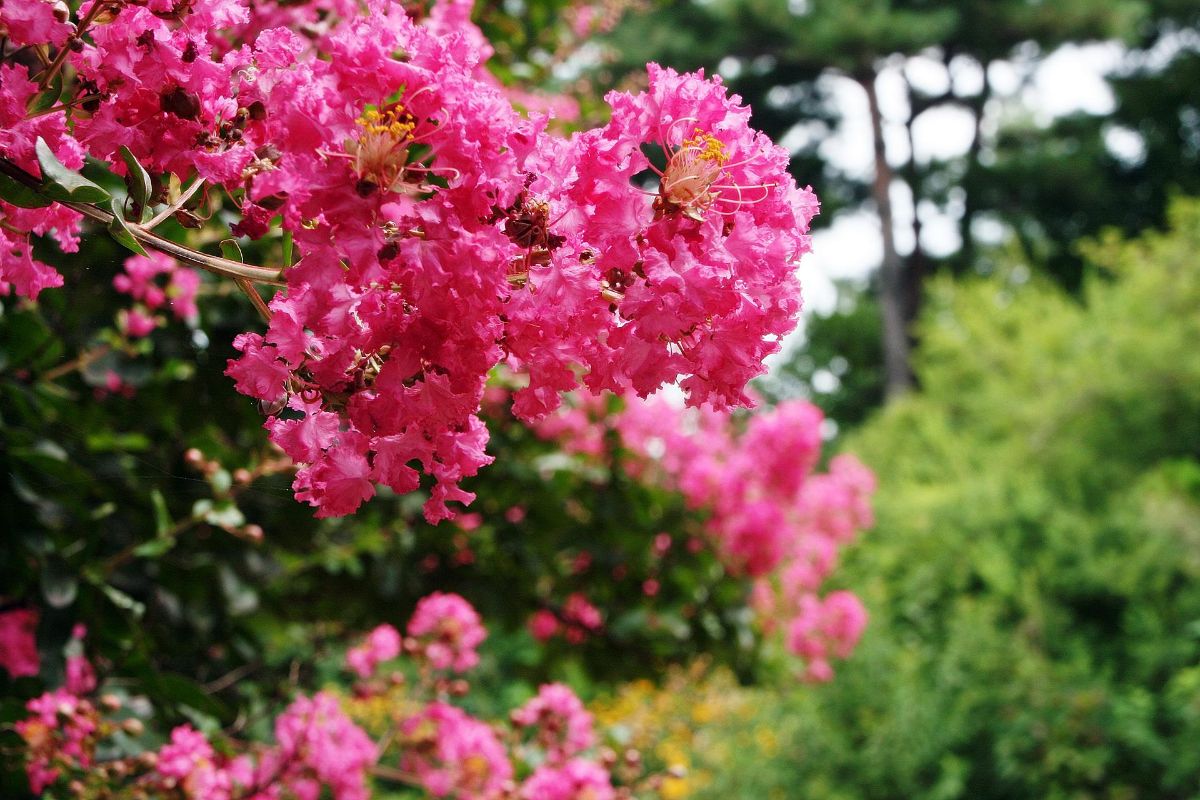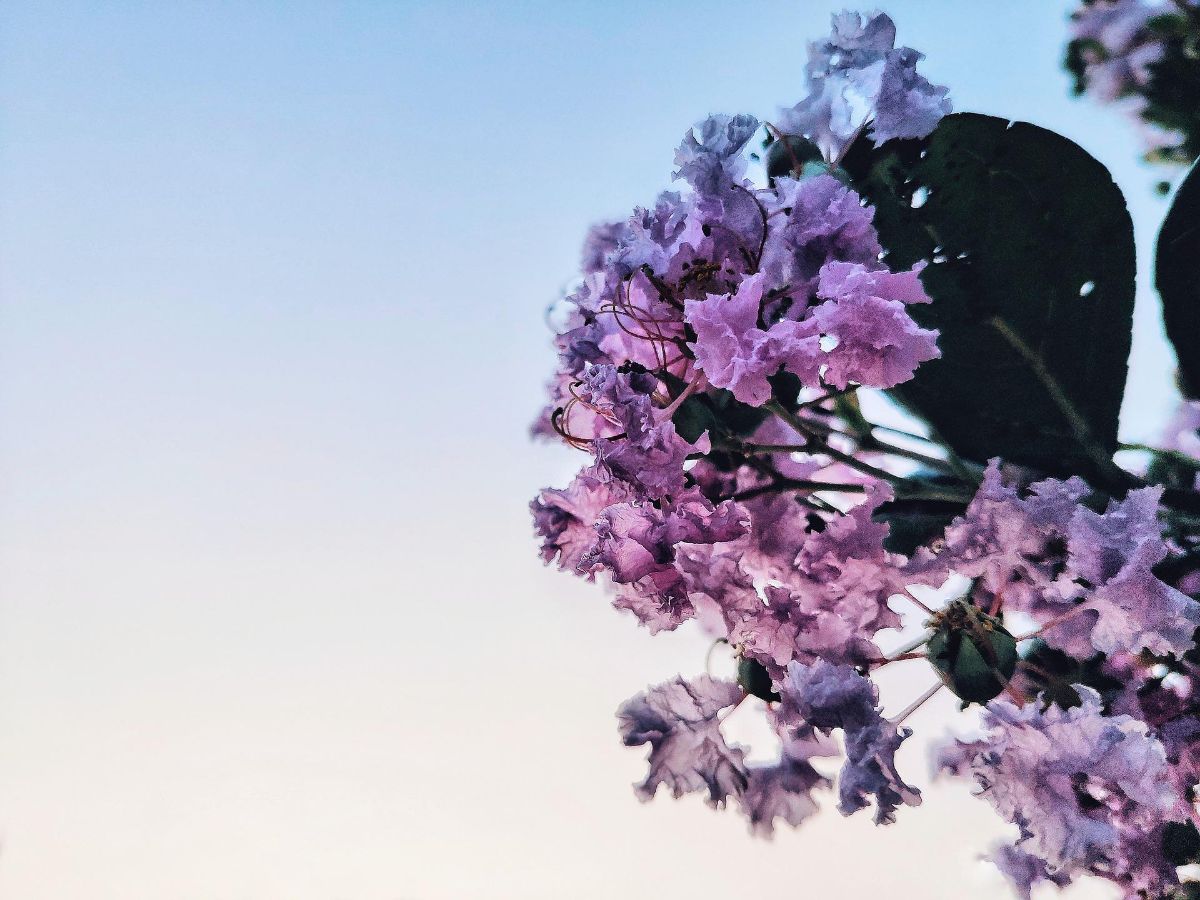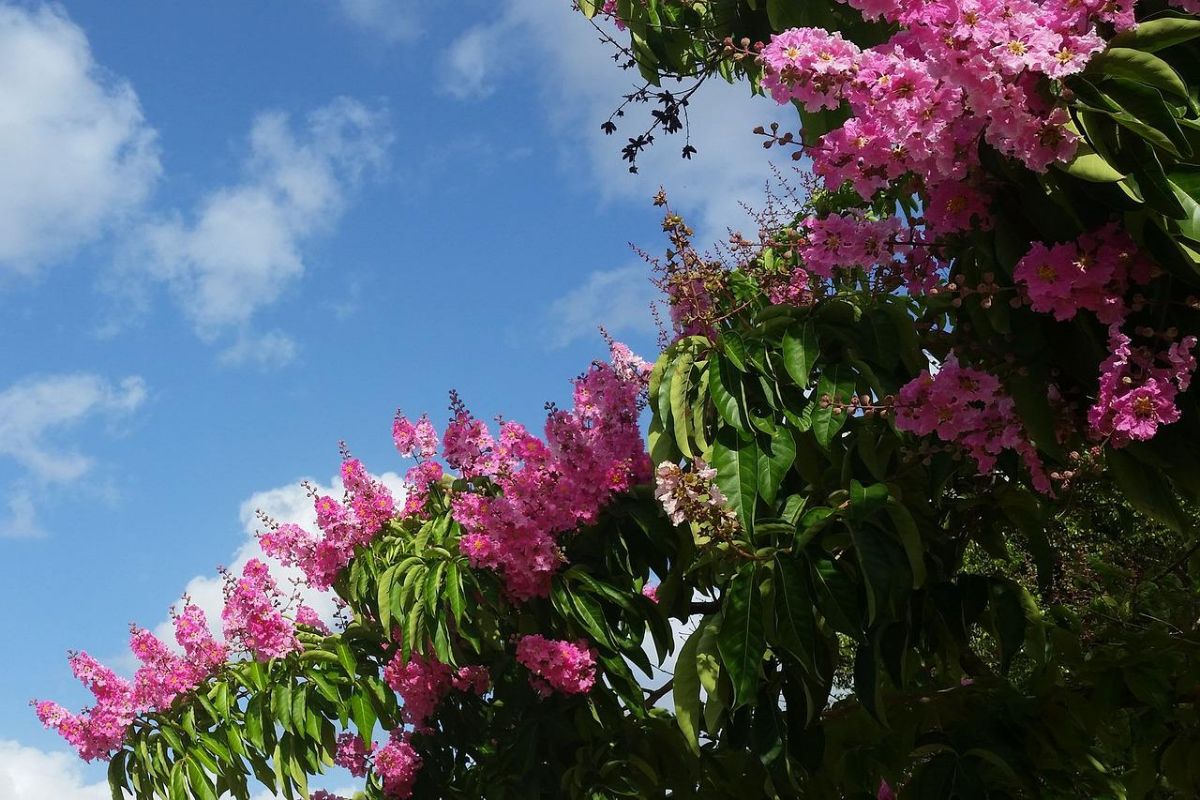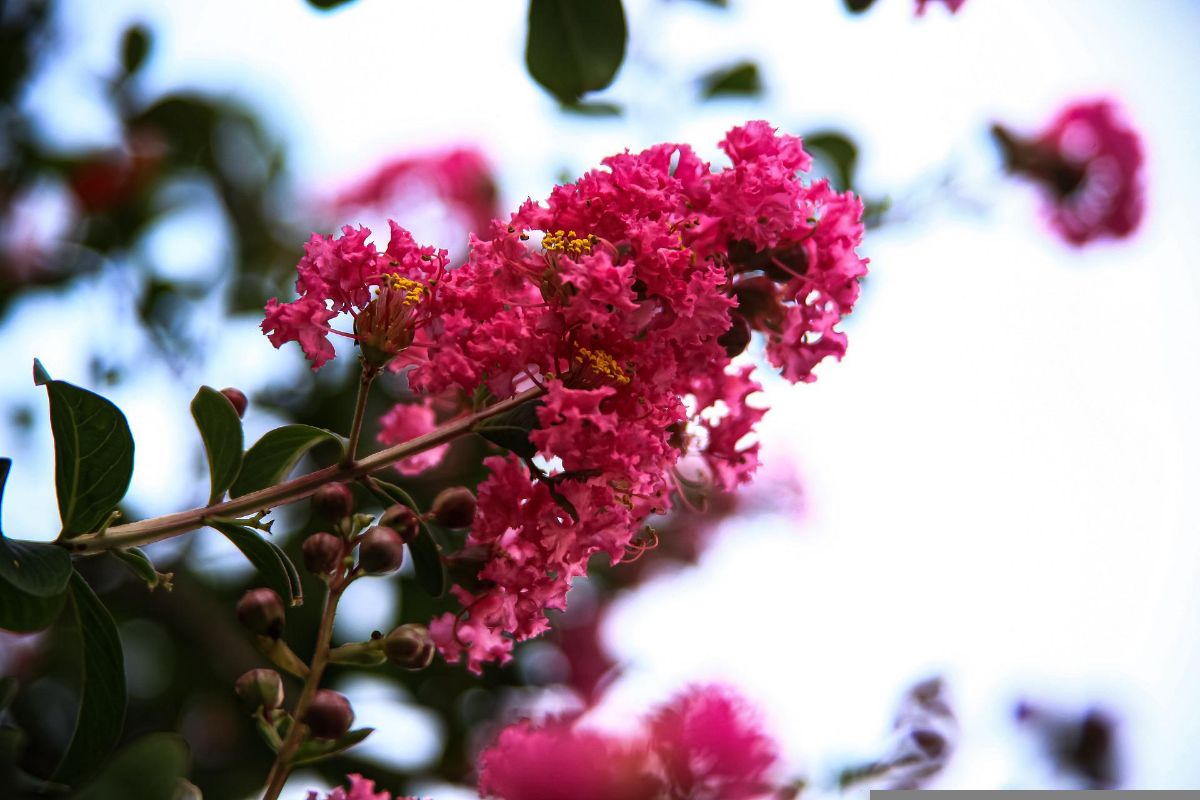
The tree of Jupiter is also known as Lagerstroemia indica. It is one of the most beautiful plants you can have in your garden. But that doesn't mean you can't have a potted Jupiter tree.
Bonsai type, a tiny tree on the terrace, or even inside the house. As long as you provide him with the necessary care, you will not have any problem with him. But, what are those cares?
Jupiter tree

As we have told you before, its scientific name is Lagerstroemia indica, but in addition to that exotic name it has, It is also known as lilac of the Indies, crespon or foam.
It is native to China and Japan and grows wild in Europe and Asia. But it can also be kept in a pot.
It is characterized by having a size more or less about 10 meters high, being the diameter of the glass of 1-2 meters. The most striking are both the leaves, which can reach measures of 2-6 centimeters long, and of a dark green color, changing to yellow and reddish, or even purple; and its flowers. These are the most appreciated for their color. They can be red, white, purple, pink or lilac and are made up of 6 petals that curl and protect several stamens.
Blooms from spring to summer to later give way to some fruits that will contain the seeds. These will only appear after 5 years of life.
It has an average life expectancy of around 60 years, but it is normal for it to live only for 40-50. Of these years, the first 10 will be in which it develops. Then it stays as is.
Potted Jupiter Tree Care

After knowing what the Jupiter tree is like, what you need to have it is to know what its care is. It is true that it will not be the same if you have it planted in the garden than if you have it in a pot (especially in the case of the substrate, irrigation and pruning). For this reason, we are going to focus on talking to you about what the Jupiter tree needs in a pot.
Location and temperature
One of the first cares of the potted Jupiter tree is the location. You should place it in a place where it has a lot of light. Even direct sun. Since it is potted, you will be able to move it to the best location, but focus on it getting at least 8 hours of direct sun per day. This plant loves the sun and if you put it in the shade or it doesn't get enough sun, it may never bloom, or worse, fungi may appear that can kill it.
As for the temperature, you should bear in mind that, despite being of Asian origin, the truth is that tolerates cold very well, even frost. And it is that it can withstand temperatures of -15 degrees. From high temperatures, it can suffer a bit if they are fired too much (its maximum is 38 degrees), having to put it in a place where there is not so much direct sun, but there is lighting.
the tree of jupiter in winter it usually “hibernates” and although it lacks leaves at that time, the truth is that it will stand out for its trunk. If you live in a very cold climate, you may want to protect it a little during the first years of life until it finishes adjusting.
Substratum
Truth be told, your potted Jupiter tree is going to be picky about the soil you use. In addition, the type of pot you use is also important.
We recommend you one of unpainted clay, because this way you will make the humidity expel it through the pot and not only through the drainage hole. This way you can have an ally if you go too far with irrigation and the land becomes waterlogged.
On the substrate, use Soils that are acidic and have good drainage. For example, universal substrate (with a slight acidity) plus drainage such as perlite or vermiculite.
Irrigation
During the spring and summer months, the watering of the Jupiter tree must be regular. Although it tolerates drought, it is best to water it several times a week. But, being in a pot, before doing so, it is advisable to check that the soil is dry or at least slightly moist. If it is not, it is better not to water because it can be harmful.
The rest of the year it holds up well with 1-2 times a week.
Now, water quality is important, so it is good that it does not have lime and, if it can be acidified, the better.
The first two years of life of this tree it does need a more abundant watering, but then you have to reduce it, since you won't need the soil as moist as at the beginning.

Subscriber
During the spring and summer months, which are when it will grow the most and have the most needs, it is important to use a fertilizer.
We recommend that you pick one for flowering plants since it is the most suitable for these specimens. Of course, being in a pot, it is better to add a little less than what the manufacturer recommends to avoid problems.
Pruning
When having the Jupiter tree in a pot, pruning is very important because it will not be able to grow as freely as if you had it in the garden.
In this sense, you will have to control growth use maintenance pruning throughout the year. At the end of the summer a major will be done so that it is well cared for.
Depending on the shape you want it to be, you will need to cut off the lower branches or shape the upper ones.
Plagues and diseases
The truth is that both the potted Jupiter tree and planted in the garden are going to be "bothered" by pests and diseases. One of the common pests are sucking insects that you will have to combat with phytosanitary insecticides. You may also suffer from powdery mildew, hazel powdery mildew and cercospora (aphids and mealybugs).
As for diseases, these can come from a lack of light and poor watering (due to excess or lack of it).
Multiplication
As we have told you before, behind the flowers of the Jupiter tree, the fruits appear and these contain the seeds. So the way to reproduce it can be this, using those seeds to plant new specimens.
Another playback option is through tree branches. So, it is, if you get branches about 20 centimeters long with some leaves you could be successful in developing roots. To do this, it is recommended to apply liquid rooting hormones about 2-3 centimeters from what will be the base.
These should be planted directly in the substrate and wait a while to see if it has been successful.
It is true that they will take about 10 years to develop, but for its beauty, it is worth it.
Have you ever had a potted Jupiter tree?